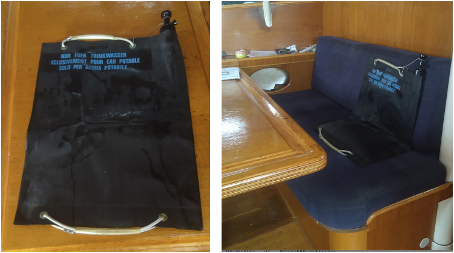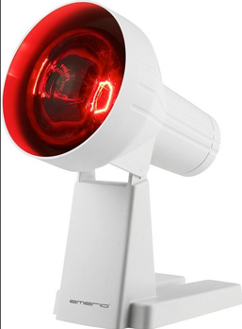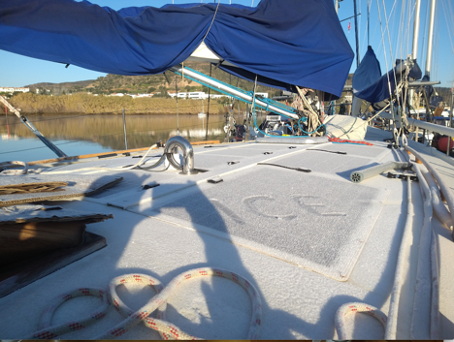The warm-hearted sailor sails as long the water is liquid enough.
But then, at Saturday night, you are on anchor somewhere, or in a harbour. The sun lowers and then sets, and, oh man, that is cold, cold, cold. Your yacht is built for summers, there is zip insulation and you start shivering.
You think: “The first thing I do this winter is installing a big big diesel stove.”
Not yet! That is Step 4! That would be most expensive choice, and lots of work and money and the worst for the environment!
Here are the four steps to keep yourself warm in your cabin.
Body reflex first – insulation
The best heating for the human body is the body itself. It spreads and distributes fully automatically and is extremely efficient. So do nothing. If the body loses too much heat, we have an excellent reflex and we prevent further loss with a sweater, a sleeping bag, as long as it insulates.
Conduction second – the jug
A jug is a nice solution. It is a very effective heat source, because it gives off the heat directly where you want it.
The jug is therefore an economical source of heat. If a liter of boiling water goes into it, that is about 100 Watt-hours of heat. The jug is then so hot that you need a towel as insulation to ensure that you don’t burn your feet. It easily warms your feet all evening, and in the sleeping bag all night too.

Radiation third – Infrared
The smallest emitter is the infrared lamp. Such a lamp is used en masse in chicken farms to hatch eggs and are very affordable. They are also available in a beautiful semi-medical version.
The lamps fit into a standard lamp socket. They are for sale from 60 to 250 Watt. You need a 230 volt connection and, of course, sufficient electricity. The port delivers that very well, and it is also possible with a larger battery pack. Between 300 Wh and 1.5 kWh is needed for an evening.

If the area to be irradiated becomes larger, for example a row of legs of a race team, then a radiant heater is a solution. Keep the radiant heater small, for example 400 Watt. It continuously irradiates the same surface, where the heat builds up steadily. A piece of plastic that has become hot will suddenly catch fire in the long run. That can also be a sailing suit. In any case, start with a meter of beam distance and then look further.
The radiant heater is equipped with a tip-over protection, but it is still hot if it falls over. So when it’s on, keep an eye on it.
Conduction at 4 – at last the stove
A stove has to heat the entire room and takes a lot of energy to do so. A small diesel heater or electric blower heater already requires 1500 watts. This can amount to an entire central heating system with a boiler of 7 kilowatts or more.
A heater heats the air past it. That air flows up and along the ceiling, while the cold air comes along the floor and is warmed up along the stove. This is how the air flows around the room. Heating via an air flow is also called convection.
This is also possible with a stove that is concealed, for example in the storage box. Air is blown from the cabin past the stove via a ventilation duct, and this air, warmed up, enters the cabin again.
The air of the entire room is heated. It costs so much energy because the warm air cools down again along the cold roof, walls and floor.
In addition, the warm air escapes through cracks or through the cabin entrance.
Conclusion
Let the stove be your last resort. The ‘solution’ of the stove has grown historically, when large famiies lived in a small space and you had to cook in the same room anyway. The last decades we could continue with this solution because of the cheap and endless flow of fuels we had. But these days the fuel is expensive, and it will be much more expensive. And just don’t do it, to contribute to just such a good environment for your children, as you enjoy now.

